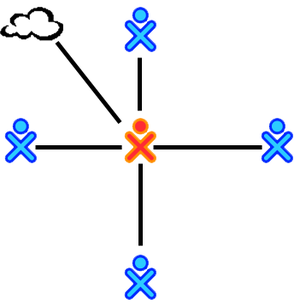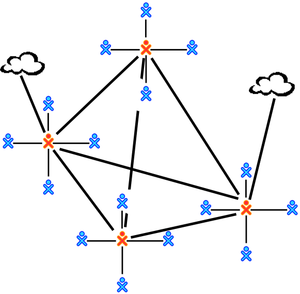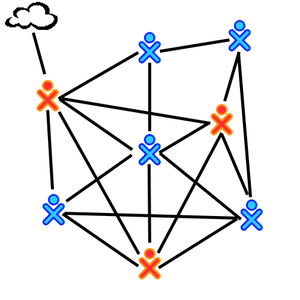WISPiab business models
work in progress doc
Business Models / Use cases
It is essential that the technical requirements / specifications be based on business model needs and real life use cases, not vice versa.
While the study of business models is work in progress (e.g. in the Wireless Africa II project), some valid models are known and tested.
Previous work on this includes:
Ian Howard
Laura Drewett
Dimensions of Categorization
Money:
- free
- paid for
Billing:
- voucher, data based
- voucher, usage time based
- voucher, calendar time based
- subscription / membership
Topology:
- central
- inframesh
- full mesh
Applications:
- Web centric networks
- Voice centric networks
User location and devices:
- User have PC/Laptop or Desktop PC at home/office
- Users use VoIP devices, mobile
- Users visit a cafe/telecentre type location
Topology: Centralized and Mesh
The entrepreneur wants to offer both centralized (aka infrastructure, hot spot, access point) and mesh models
==> We need to implement both Access Point Management and Mesh protocols
Networks models in detail
In particular, we need to take into account the following 3 network models, and the hybrid models between them.
In the following pictures,
- red stands for business / entrepreneur owned and operated nodes,
- blue stands for clients / users.
The line between the two may be transparent.
Centralized model

- The business/entrepreneur acts as a central access point.
- The central business/entrepreneur node supplies an internet uplink (optional).
- Clients connect to this central point, e.g. with PCs, laptops, client nodes or VoIP phones.
Inframesh model

- The business/entrepreneur operates an infrastructure mesh.
- The business/entrepreneur node supplies internet uplink(s) at one or more of these nodes (optional).
- Clients connect one or more of these nodes, as clients, e.g. with PCs, laptops, client nodes or VoIP phones.
Full mesh model

- The business/entrepreneur operates one or many mesh nodes.
- The business/entrepreneur node supplies internet uplink(s) at one or more of these nodes (optional).
- Clients fully particpate in that mesh, typically on dedicated node hardware, less likely with PC/laptop, and even less with VoIP phones. Clients may supply internet uplinks (optional).
Especially in this model, the line between business and client operated nodes might become transparent.
Network Management
The entrepreneur needs to be able to monitor, manage, troubleshoot the network
==> We need network management SW plus interfaces, e.g. Nagios, Cactus, Webmin, ...
Voice Services
The entrepreneur wants to offerVoice services
==> We need to implement Asterisk, OpenSER or similar, plus additional management tools for these, if idnetified as needed
Billing
The entrepreneur wants to offer a variety of billing options, e.g. monthly subscription, time/voucher (airtime) based, free access
==> We need to implement billing and accomodate the various models on the box, in parallel (e.g. parallel free and closed segments, etc)